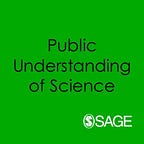BOOK REVIEW
Social Science for What? Battles over Public Funding for the “Other Sciences” at the National Science Foundation
Review by Massimiano Bucchi
The author focuses on the role of the social sciences within the National Science Foundation and its funding schemes.
The status and relevance of scientific fields are often traced back to profound epistemological arguments and convictions. This well-researched book clearly demonstrates the importance also of contingent, historical and political processes in shaping certain research areas — in this case, the social sciences in the United States.
The author focuses on the role of the social sciences within the National Science Foundation and its funding schemes. The central claims of the book are: “that the particular conditions and developments in American society, politics and science” that characterised the origins of NSF “had a powerful influence on the establishment of […] a scientistic framework for understanding, evaluating and supporting the social sciences”; and “that NSF’s role in scientific boundary work and its scientistic framework had deep implications for developments in other areas”, including “American political culture” and the social sciences themselves.
The author uses the adjective, scientistic, in a rather specific way, to refer to the idea (highly influential both within the NSF and American science policy at large) that the natural sciences, being “more rigorous, more objective and more advanced” should represent the obvious model for making progress in the social sciences. This notion of the social sciences as “junior partner” of the natural sciences (in Italian we would say: “il parente povero”, equivalent to “poor cousin”) traversed the whole history of the NSF, largely shaping funding schemes as well as political debates.
The original proposal to establish a National Science Foundation came in the report Science: The Endless Frontier delivered by Vannevar Bush to President Harry S. Truman in 1945. It did not initially contemplate funding in the social sciences. For Solovey, the process by which the social sciences came to be included in the NSF’s remit offers a unique opportunity to analyse profound controversies “over the social sciences’ scientific identity, political meaning and practical relevance”.
A limited funding programme in the social sciences was established in 1954, four years after the NSF was set up. The book highlights the role of sociologist Harry Alpert and his “underdog strategy” to avoid political criticism and maintain the social sciences’ limited funding space within NSF. Alpert advocated for the social sciences to position themselves at the “hard-core end of the research continuum”, striving to be “objective, generalisable and verifiable”, and adapting as much as possible to the standards and evaluation processes of the natural sciences.
From the late 1960s to the late 1970s there were sharp attacks on the social sciences from both conservative and progressive political quarters. For example, Democratic senator William Proxmire accused federal agencies of “wasting hard-earned taxpayer money on esoteric research projects, including some NSF-funded studies in the social and psychological sciences”.
Although the book’s historical reconstruction deals mainly with the period from before the establishment of the NSF until the late 1980s, it convincingly shows how powerful the scientistic view of the “fundamental unity of the sciences, often accompanied by an understanding that the natural sciences were the golden standard” has been in shaping the research, social and political trajectory of the social sciences in America.
It would be interesting to expand and compare the author’s analysis with other national funding strategies and debates around the world, including those of international institutions like the European Commission.
Massimiano Bucchi is Professor of Science and Technology in Society and Director of the Master SCICOMM at the University of Trento, Italy. He is a former editor of Public Understanding of Science. His recent publications include Newton’s Chicken. Science in the Kitchen (World Scientific, 2020).
